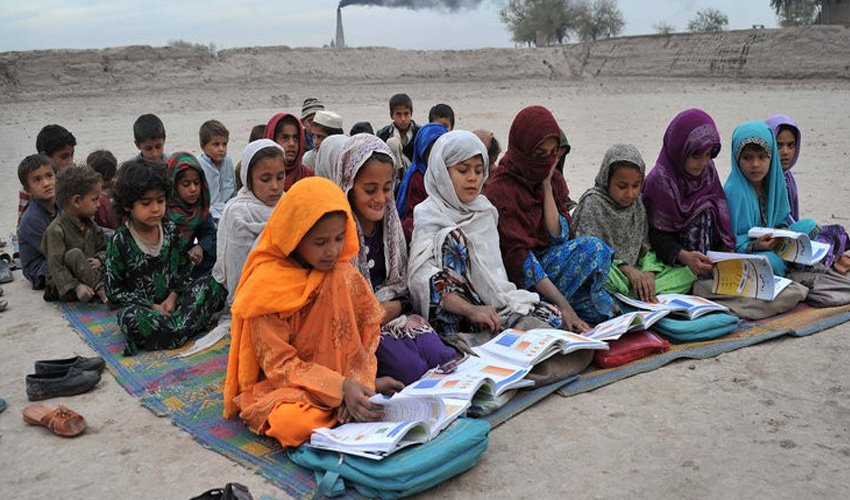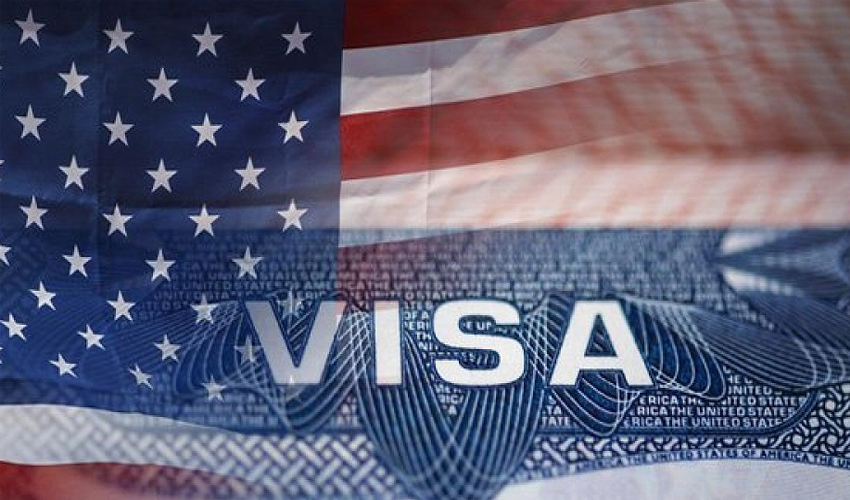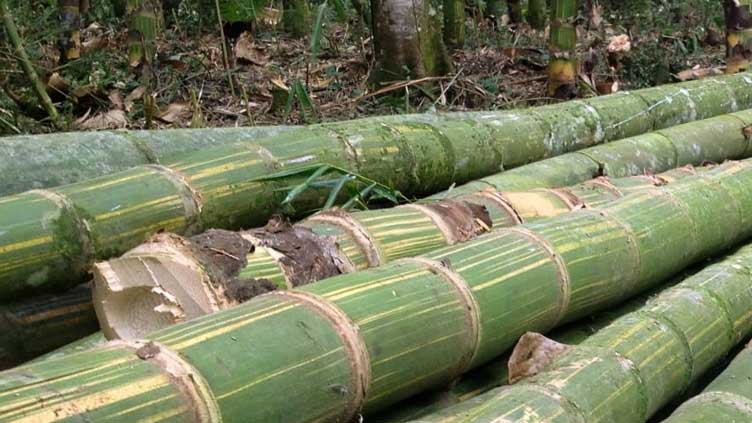One of the basic rights that act as a tool of inclusive both national and individual advancement is education; though Pakistan has made progress in this line, yet girls are not getting enough equality in schooling. Gender inequalities exist, which somehow lead to an unsatisfactory state of schooling in the country.
Currently, about 13.71 million girls in Pakistan are out of school. However, these impenetrable walls, rather based on social norms and structures, stand between girls and education. Despite the remarkable progress in schools and infrastructure and net enrolment ratio, advancement in the education of girls has become unsustainable and acquired a roadblock.
Current state of girls’ education
The Pakistan Education Statistics (PES) report for 2022-23 states that there are approximately 21 million girls attending schools in the country, in contrast to 25 million boys. The data shows that there is still a gap, with girls being 7% less likely to attend school than boys. In total, 41.5% of girls and 34.9% of boys are still not attending school from primary to higher secondary levels. Just these statistics indicate an urgent requirement for increased focus on closing the gaps in educational access that could potentially separate girls and boys.

The disparity in school infrastructure is adding to this issue as well. Out of 238,718 educational institutions in Pakistan, 65,683 cater exclusively to girls, 97,509 cater exclusively to boys, and 74,118 are mixed-gender schools. This illustration indicates that girls' school facilities are inferior to those of boys' or co-educational schools. Additionally, many girls' schools lack adequate facilities, making it difficult for girls to obtain a good education.

Key findings: Disparities in enrollment and facilities
The PES report outlines several critical findings regarding the current state of girls' education in Pakistan. These findings highlight the challenges girls face in accessing education, as well as the disparities between boys and girls across various educational indicators:
Out-of-school girls: As of 2022-23, 13.71 million girls remain out of school. Girls are 7% less likely to attend school than boys, with 41.5% of girls and 34.9% of boys remaining out of school from primary through higher secondary levels.

Gender disparity in institutions: Pakistan has 238,718 educational institutions, with 41% being for boys, 28% for girls, and 31% co-educational. The limited number of institutions for girls presents a significant barrier to their education.
Infrastructure deficiencies: Around 4% of girls' schools lack adequate buildings and 10% of those that do have buildings are not durably constructed. Additionally, 25% of girls' schools require repairs, and 6% are in dangerous condition. Furthermore, 14% of girls' schools lack toilets, 17% do not have drinking water, and 22% are without electricity. These infrastructural deficiencies create unsafe and unsuitable learning environments for girls.

Educator imbalance: While there are around 2 million educators in Pakistan, only 1.23 million are female, indicating a need for more female teachers to serve as role models and create a more conducive learning environment for girls.
Gender parity: More ground to cover
Gender disparity in education still remains highly prevalent, though with slight improvements in the enrollment rate at various stages of education. Again, while at the pre-primary level, 4.46 million girls are enrolled, the figure plunges drastically as they progress through the education system. Middle school enrollment shows only 3.79 million girls, and the number dips even more to 1.84 million at high school. In the higher secondary level, only 1.09 million girls are enrolled, and the number goes down to a mere 0.34 million at the degree level.
These figures seem to suggest that despite going to school in large numbers at the primary level, a large number may drop out while making transitions to higher levels. Reasons for dropout include multifaceted socio-cultural barriers, early marriages, inadequate safe transportation, and poor school infrastructure.
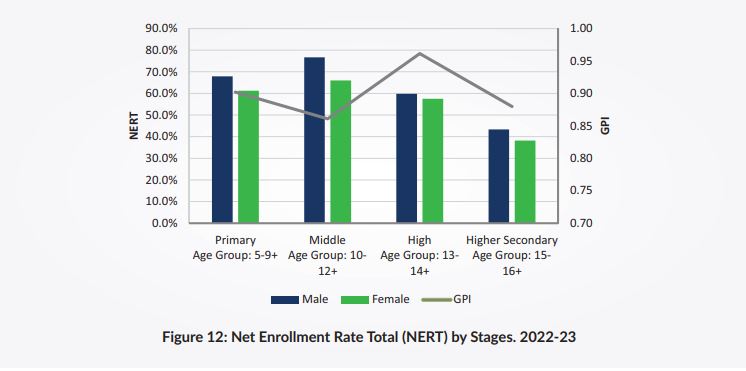
Achieving universal primary and secondary education in Pakistan is still a distant dream. As per the PES report, there are 26.09 million children not attending school, with 13.71 million girls and 12.38 million boys affected. At the elementary level, 5.79 million girls are not attending school, resulting in a 38.8% out-of-school rate. This percentage is much higher compared to the 32.1% of boys who are not in school. When girls reach higher levels of education, the percentage of those not attending school rises, peaking at 61.8% in the higher secondary level.
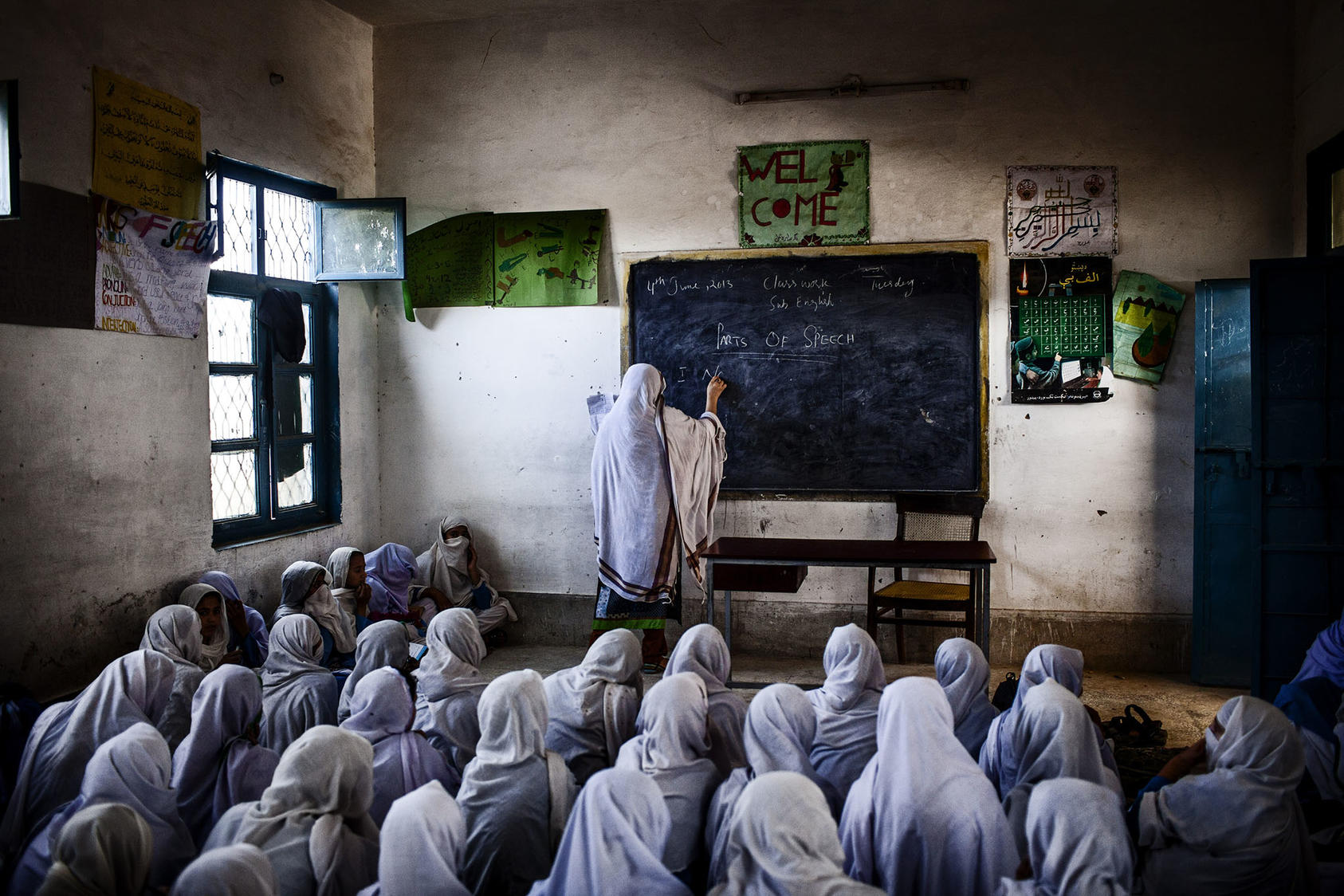
The differences in educational outcomes for girls and boys at different stages of education emphasize the necessity for specific measures to encourage girls to stay in school. It is important to overcome the socio-cultural obstacles that hinder girls from pursuing their education in order to help them successfully finish their studies.
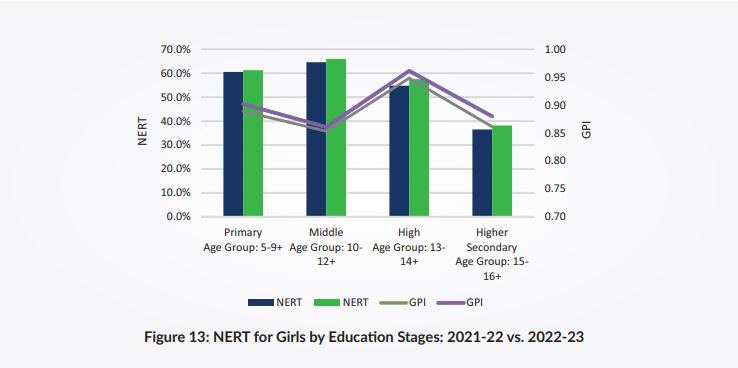
Tackling infrastructure gaps: Unfinished business
School infrastructure plays a vital role in creating a conducive learning environment. However, the PES report reveals significant gaps in infrastructure, particularly in girls' schools. In 2022-23, around 2,262 girls' schools lacked adequate buildings, and 25% of girls' schools required repairs. Additionally, 12% of girls' schools were without boundary walls, which are essential for ensuring privacy and safety for female students.
Furthermore, 14% of girls' schools lacked toilets, and 17% did not have access to drinking water. The absence of these basic facilities poses serious health and safety risks for girls and often leads to higher dropout rates, particularly during adolescence when girls require safe and hygienic environments.
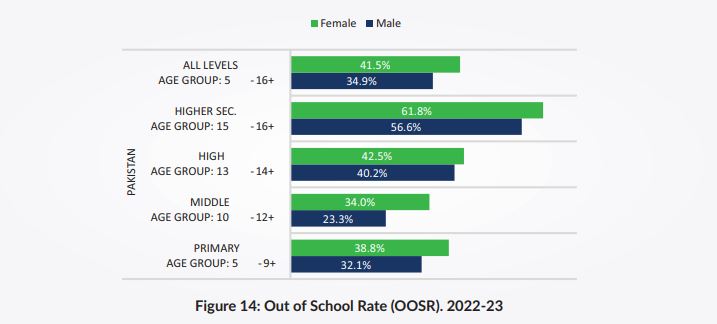
The lack of electricity in 22% of girls' schools is another significant barrier. Access to electricity is critical for modern education, as it enables the use of digital tools and technology in the classroom. Without electricity, girls are deprived of opportunities to develop essential ICT skills, which are increasingly important in today's digital age.
The PES report also highlights significant regional disparities in girls' education across different provinces. In rural areas, girls face even greater challenges in accessing education compared to their urban counterparts. For example, in Balochistan, 75.4% of girls are out of school, compared to 63.6% of boys. The situation is particularly dire in rural areas, where access to education is limited by a lack of infrastructure, poverty, and cultural norms that discourage girls from attending school.
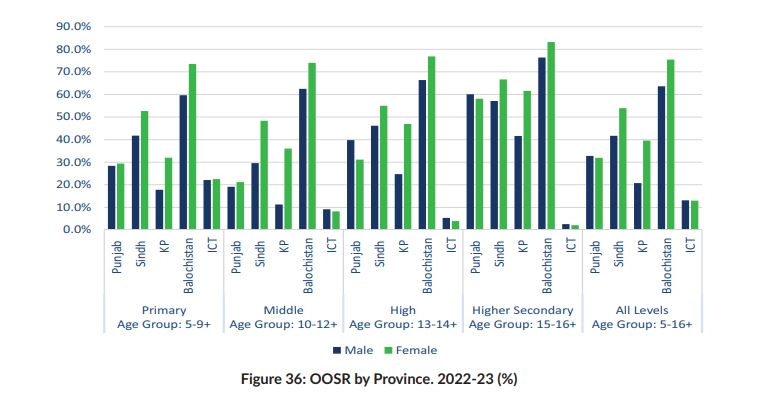
In contrast, in more urbanized areas like Islamabad Capital Territory (ICT), the out-of-school rate for girls is much lower, at 12.9%. However, even in these areas, gender disparities persist, particularly at higher education levels.
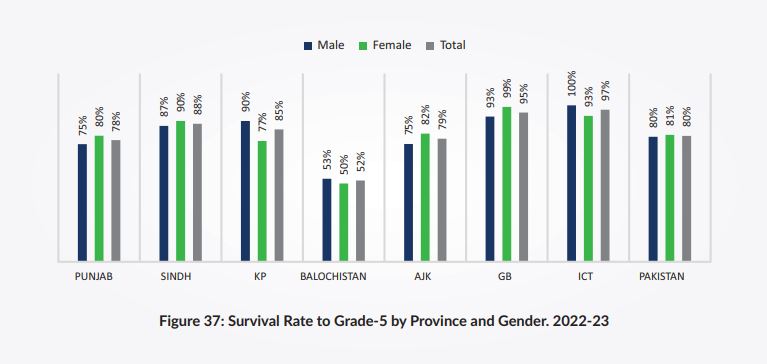
Addressing the gaps
The findings of the PES report underscore the urgent need to address the challenges facing girls' education in Pakistan. While progress has been made in increasing enrollment rates, particularly at the primary level, significant obstacles remain. To achieve gender equality in education, Pakistan must adopt a multi-faceted approach that addresses both the quantity and quality of education for girls.
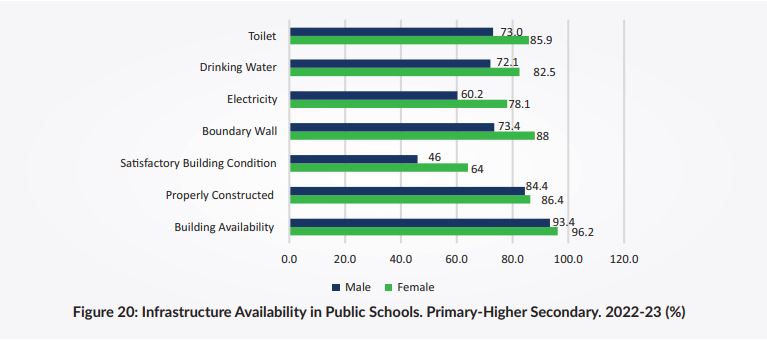
Certain policies would be required to address the issues of very high rates of out-of-school girls due to socio-cultural barriers. The policies on how to implement this result will require community involvement, education drives, and the provision of secure transportation and monetary rewards for families to encourage their daughters to continue attending school. Improving school infrastructural development through the construction and repair of girl's schools with basic needs like toilets, water supply, electricity, and fencing are a priority set by the government.
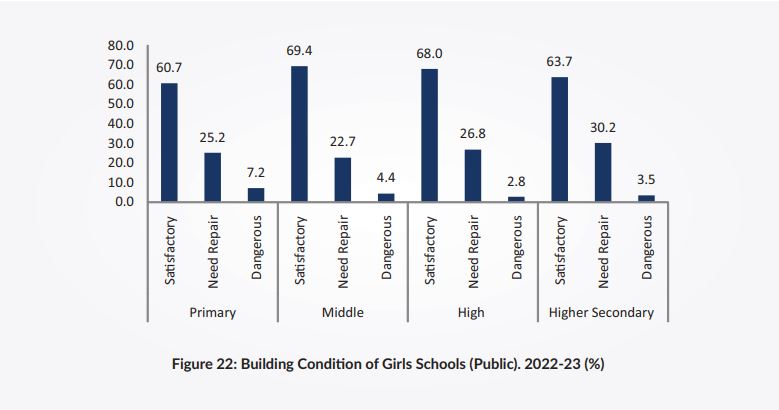
More female teachers, particularly in rural areas, will act as good role models and provide an empowering learning environment. Girls should be encouraged to train with ICT skills as preparation for future work. For this purpose, schools should be provided with modern technology. Conclusion Regional inequality is needed to be addressed at a higher grade. More funds should be allocated towards the educational opportunities and gender disparities in regions where the out-of-school children's rates are the highest, such as Balochistan and Khyber Pakhtunkhwa.
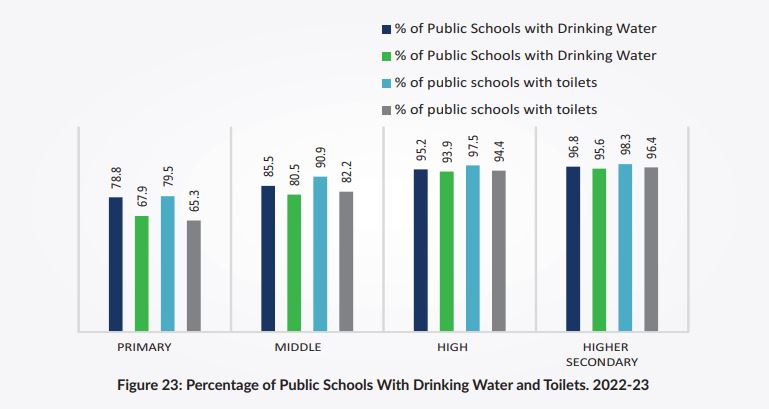
Investing in the education of girls is crucial for both human rights and Pakistan's social and economic progress. Pakistan can empower its female population and break the cycle of poverty by providing quality education to every girl, enabling them to contribute to their communities. Creating an inclusive and supportive environment for girls to flourish in education necessitates a persistent commitment from the government, civil society, and communities.






